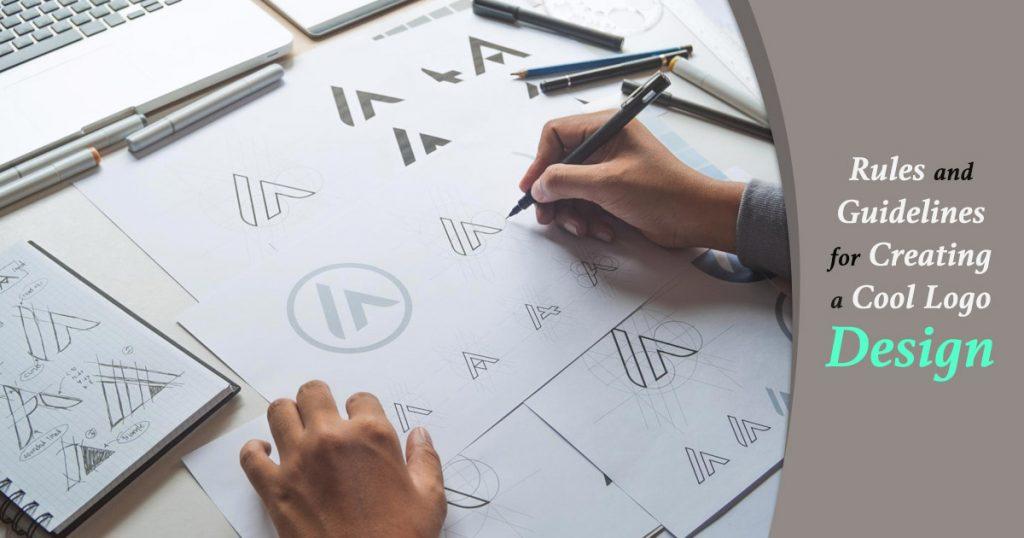Creating a great logo involves following essential logo rules that help businesses stand out. A logo is not just an image; it’s a symbol of your brand’s identity. To make sure it represents your business effectively, designers must adhere to several principles, ensuring the final product is both professional and memorable.
Importance of a Well-Designed Logo
A well-designed logo is crucial because it creates a lasting impression. When a customer first encounters your business, the logo is often the first thing they see. This image helps them form an immediate connection with your brand. A memorable logo can enhance recognition and set a business apart from competitors.
Moreover, a solid logo can establish trust with your audience. People tend to gravitate toward companies with professional branding, and having a clean, well-thought-out design gives off the right impression. A logo that’s well-executed builds a sense of familiarity, increasing the likelihood of repeat customers.
Features of a Cool Logo
A cool logo isn’t just about looking trendy. It needs to work across various platforms and be easily recognizable. Below are some key features to consider when designing a logo that adheres to standard logo requirements:
- Simplicity: A simple logo is easier to recognize and recall. Complex logos can be overwhelming, especially when scaled down for smaller applications.
- Scalability: Your logo should look great whether it’s on a business card or a billboard. Scalability ensures the design is versatile.
- Color Usage: Colors play a significant role in how a brand is perceived. For instance, blue conveys trust, while red can evoke passion.
- Timelessness: A good logo will stand the test of time. Avoid following fleeting trends and opt for a design that can remain relevant for years.
- Originality: Your logo should be unique, not a replica of something else. A distinct logo sets you apart from competitors.
Rules to Follow When Designing Your Logo
When it comes to logo design, adhering to specific rules can make all the difference between a successful or ineffective design. Below are guidelines every designer should follow to ensure they meet the necessary logo requirements.
Brainstorm and sketch your ideas.
Before diving into digital tools, take time to brainstorm and sketch. This initial phase allows for creative freedom without the pressure of perfection. Many iconic logos began as rough sketches. The goal is to explore various ideas and determine which concept aligns best with the brand’s identity.
It must represent your brand.
A strong logo represents your brand’s core values. Think about what your business stands for and how you want your customers to perceive it. Whether it’s a modern, minimalistic style or a more traditional, intricate design, the logo should reflect the essence of your company. This way, every time someone sees your logo, they associate it with your values.
Simplicity is the key.
One of the most important rules of logo design is to keep it simple. Overcomplicating a logo can reduce its impact and make it hard to recognize. Companies like Apple and Nike have proven that a minimalist approach can yield the most iconic results. A logo’s simplicity allows for easy recognition, especially when viewed from afar or in small formats.
Note your logo’s size.
Logos need to be scalable to fit different mediums, from websites to product packaging. Ensure the design looks just as good on a small app icon as it does on large banners. Designers must test their logos in various sizes to ensure nothing gets lost in translation. This consideration is critical in today’s digital age, where logos are seen in multiple formats.
Carefully select fonts.
Font choice can make or break a logo. Select a font that complements the overall design without overpowering the visual elements. Avoid using trendy fonts that may not age well. Instead, opt for classic typography that enhances readability and maintains the design’s integrity over time.
Balance and symmetry.
A balanced logo offers visual appeal and harmony. Symmetry and proportion are essential to creating a logo that feels stable and professional. Imbalance can make a logo feel off-center and less pleasing to the eye. Ensuring that all elements of the design are well-balanced creates a polished, refined look.
Original and memorable.
Standing out in a crowded market is essential. Your logo should be distinctive, leaving a lasting impression on customers. Avoid copying other designs or relying too heavily on stock images. Originality fosters recognition, and people are more likely to remember your brand if the logo is unique and meaningful.
Don’t follow trends.
While it might be tempting to follow the latest design trends, it’s often better to create a timeless logo. Trends come and go, but a logo should endure. Consider brands like Coca-Cola, whose logo has remained relatively unchanged for decades. Sticking to a classic design ensures your logo won’t feel dated in a few years.
Test on all media.
A successful logo must work across all platforms, from social media and websites to print and merchandise. It’s important to test your logo in various formats to make sure it looks good everywhere. For instance, the logo should be visible on dark backgrounds and work in both black-and-white and color formats. This ensures versatility in its application.
Designing a Lasting Logo
When creating a logo, it’s essential to follow the proper logo rules to ensure the design is versatile, memorable, and timeless. Incorporating principles such as simplicity, balance, and originality guarantees your logo will represent your brand effectively. Keep in mind that a logo isn’t just an image—it’s an investment in your company’s future. By adhering to these design rules, you’ll create a logo that stands out and supports your business’s long-term growth.
A well-designed logo that follows standard requirements serves as a critical asset for any business. It reflects the brand’s identity and values, helping to establish trust and recognition among customers. Remember, following these logo guidelines will ensure your logo is not only visually appealing but also capable of standing the test of time.
